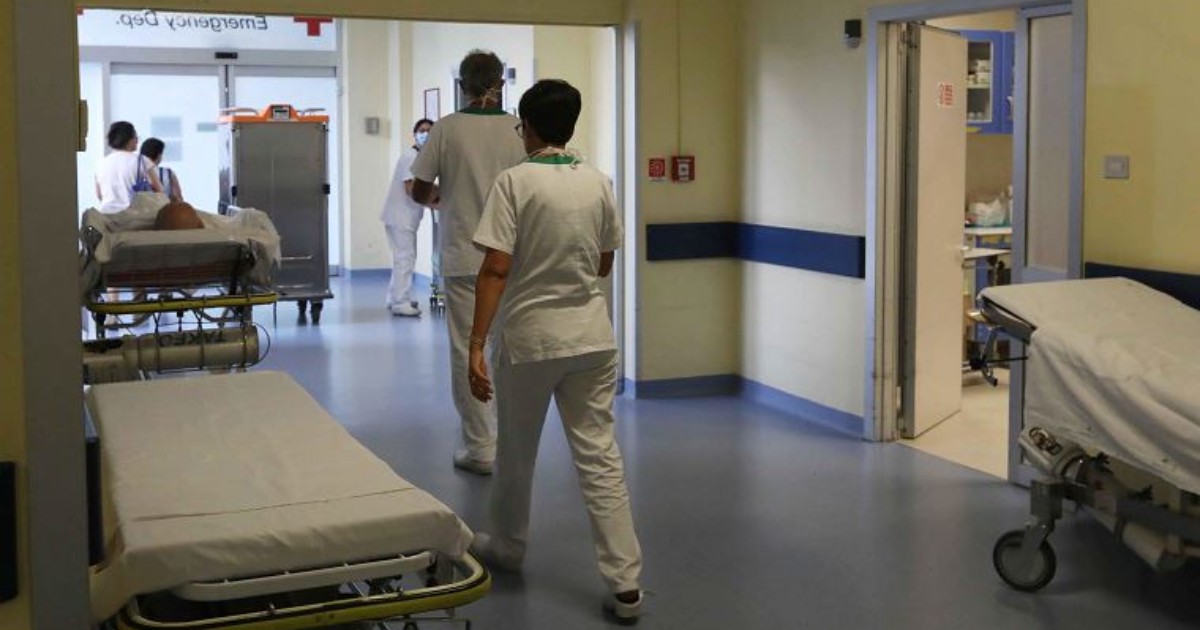Insufficient beds, waiting lists of up to one year for non-urgent pathologies, wards in trouble, intermittent ambulances, insufficient cleaning staff: the fourth wave Covid is sending public health into a tailspin in Lazio. The alarm comes from doctors, but also from nurses and other operators in the sector. “This fourth wave is fortunately not as serious as the first but it has an equal impact on hospitals and on the population,” he says Guido Coen Tirelli, head of Otolaryngology at Sant’Eugenio in Rome and secretary of the union of hospital doctors Anaao Assomed of Lazio. Reached by telephone by ilfattoquotidiano.it, Coen Tirelli explains that “in all Roman public hospitals activities for non-urgent pathologies were reduced, the nursing staff is diverted to vaccinations and assistance to Covid patients “.
To give some examples: at the Sant’Eugenio hospital in Rome in pre-pandemic times, surgery carried out eight sessions a day, today it is able to guarantee two. The times for specialist visits, in all public hospitals, have expanded considerably and are there waits that are close to 8 or 12 months. And the waits for non-urgent surgical operations are postponed from three to six months. In the emergency rooms, ambulances encounter service blocks. According to the findings of the Fp Cgil of Rome and Lazio, daily peaks of 50 ambulances stopped more than due at the hospital entrance, because they could not release patients due to overcrowding, were recorded on a regional basis.
The crisis situation affects “everyone, from San Filippo Neri to Santo Spirito, all publicly run hospitals are experiencing an overload for Covid patients and consequently there is a crazy difficulty in public hospitals to treat non-urgent pathologies”, adds Coen Tirelli. “There are whole areas of hospitals that are completely shut down, are those intended for non-urgent pathologies. And in the surgical areas we work on a narrow gauge, there are no beds for the sick who are not Covid and in the operating theaters we work less because there is a lack of both nurses and anesthetists, diverted to other activities to deal with the Covid emergency ”, Emphasizes the doctor. The difficulties concern above all the surgeries, therefore routine operations, such as removal of the gallbladder, tonsils or appendix, or pathologies that do not endanger the patient’s life but can become serious if delayed for too long. “For a gallbladder, it can take up to three or four months to wait until today,” says Coen Tirelli.
And as a result of overcrowding, the workloads for cleaning in the Covid departments have also increased, with a consequent slowdown in the service in the other departments. “It is physiological that at the moment most of the cleaning staff are employed in the Covid departments. We call the Covid areas and the emergency rooms red areas, together with the operating theaters: there is a lot of work to be done, with significantly intensified rhythms and schedules, because in addition to ordinary cleaning we have to carry out sanitizations. All this while the number of people employed and the amount of hours required is always the same, if not actually decreased as proposed in the ASL Roma 5 ″, says Dhaou Yahyaoui of Filcams CGIL.
In some structures, the increased workload has resulted in a lack of protective devices. “The cleaning staff, mostly made up of women in their 50s, even in important facilities, such as Umberto I in Rome, often find themselves without masks, gels and gloves: they have to go and ask the head of the room. on duty, because those foreseen for ordinary endowment are not sufficient ”, adds Yahyaoui.
A scenario that in the short term risks widening the gap between public and private, and in the long term could exacerbate inequalities in access to care: an issue on which institutions, starting with the government, have promised to intervene by leveraging funds from the Pnrr coming soon. However, the path is uphill in Lazio where, before the pandemic, after ten years of commissioner, the regional health system was already suffering from a significant shortage of personnel due to the blocking of turnover: hospitals could only hire 10 percent of the total outgoing staff, out of one hundred and in 10, in short. Thus the current situation sees a shortage throughout the region “of about 10 thousand units including doctors, nurses, health and administrative staff”, he says Massimiliano De Luca, Head of the Health Department Fp Cgil Rome and Lazio which represents nurses, operators in the sector and administrators. “Another 3,500 are missing if you really want to implement the projects that you plan to carry out with the funds of the NRP, starting from the health houses,” he adds.
With the pandemic, starting from March 2020, about 4 thousand new units have been grafted into the Lazio health system “but these are temporary and expiring personnel who should be stabilized immediately, also considering that the new budget law favors them. hiring after 18 months, exceeding the 36-month limit set by the Madia law. In addition, new hires must be unlocked immediately ”, he says. Not only that, one of the issues on which it is essential to intervene according to the union is the ceiling on personnel expenditure imposed on public hospitals: a measure that creates the main difference in the reduction of waiting times between public and private private structures can make batches of hires and therefore find unlimited workforce unlike public ones. “It is something on which we must begin to think and act at the national government level – concludes De Luca -, the pandemic has shown that in health care it is no longer possible to think that public hospitals have staff spending caps”.
